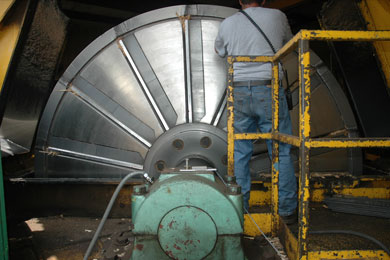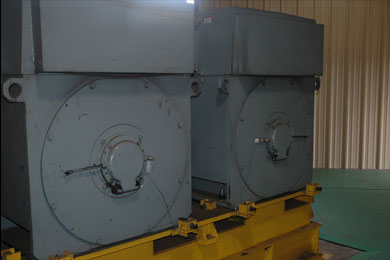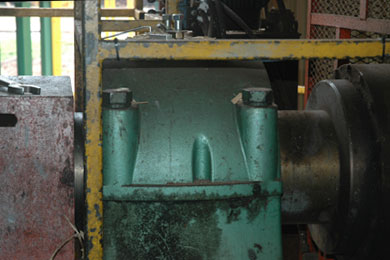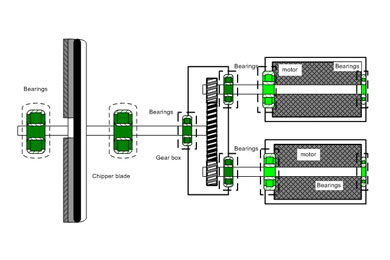Minimize downtime and machine maintenance by utilizing TRAKKER for Vibration Monitoring and Control
Chipper Mills are usually located close to a Paper Mill, generally in the range of 1000' so that the chips can be transported via conveyor belts to the digesters where they start breaking them down into pulp. Some of them are closer to the logging area (forest) where the chips can be put into trucks or rail cars and transported that way.
If any of these 6 steps are interrupted, the Mill goes down
- Trucks come in loaded with logs
- Chipper crane unloads the logs in to a circular staging area
- Crane feeds the logs into the de-barker hopper and the
- Logs pass through the de-barker and from there they are fed by conveyor into the chipper
- The chips are moved by conveyor out to the yard chip pile (or directly on to a rail car)
- The chips are then reloaded on another conveyor and moved over the fence that separates the chipper mill from the paper mill
Most of the chipper mills have a three day supply of chips on hand so if something in the chipper mill breaks - then they have three days to find the problem and fix it.
Chipper Blades are typically changed and re-sharpened (if the blades have not been damaged by some foreign material) when the chips coming out of the machine are get too large. If there is a large chunk that is broken out of a blade, or bent and gnarled under - which can be up to 8" across - then the material will not be the optimum size for the paper mill digesting process.
What TRAKKER can do for individual Chipper Components
Since blades wear down and are damaged in the normal course of business. The TRAKKER system can be used to determine when the optimum time is to replace the dull or damaged blades.
Trakker can monitor and predict catastrophic failure in the following:
-
Predict Failure on Gear reducers
Vibration sensors placed on these units will alert the operator if the signature changes which would indicate the gears are wearing out and could be getting close to failure.
-
Rebuild Bearings on your terms
By catching a problem with a bearing on the idler or drive end of the driveshaft, you can repair or replace the bearing which costs approx. $2400 rather than after a failure, in which the bearing housing is also damaged and the replacement cost is an additional $11,000 to $15,000.
-
Monitor your Electric Motors
The efficiency and machine condition of Electric motors can give you an accurate picture of what the motor is doing at all times. With the Smart Board, Hound & the Owl - vibration signal can be monitored. Sensors on the motor can also power current draw, temperature and even noise of the motor.
-
Replace Blades of the Chipper with empirical data to maximize usage and maintain efficiency.
If a power consumption increase is detected, then the blades are dull/damaged which causes more resistance and therefore more current is required. These can be set up to send notifications that the blades need to be either changed or replaced. The point where cost (power usage) and efficiency intersect can be pinpointed.
-
Instantly detect Motor/Gear Box Alignment Problems
The TRAKKER system can be used to detect miss-alignment, and/or anchor bolts that are backing out or are loose. The vibration signal will change and will give you a heads up that an inspection is needed.



